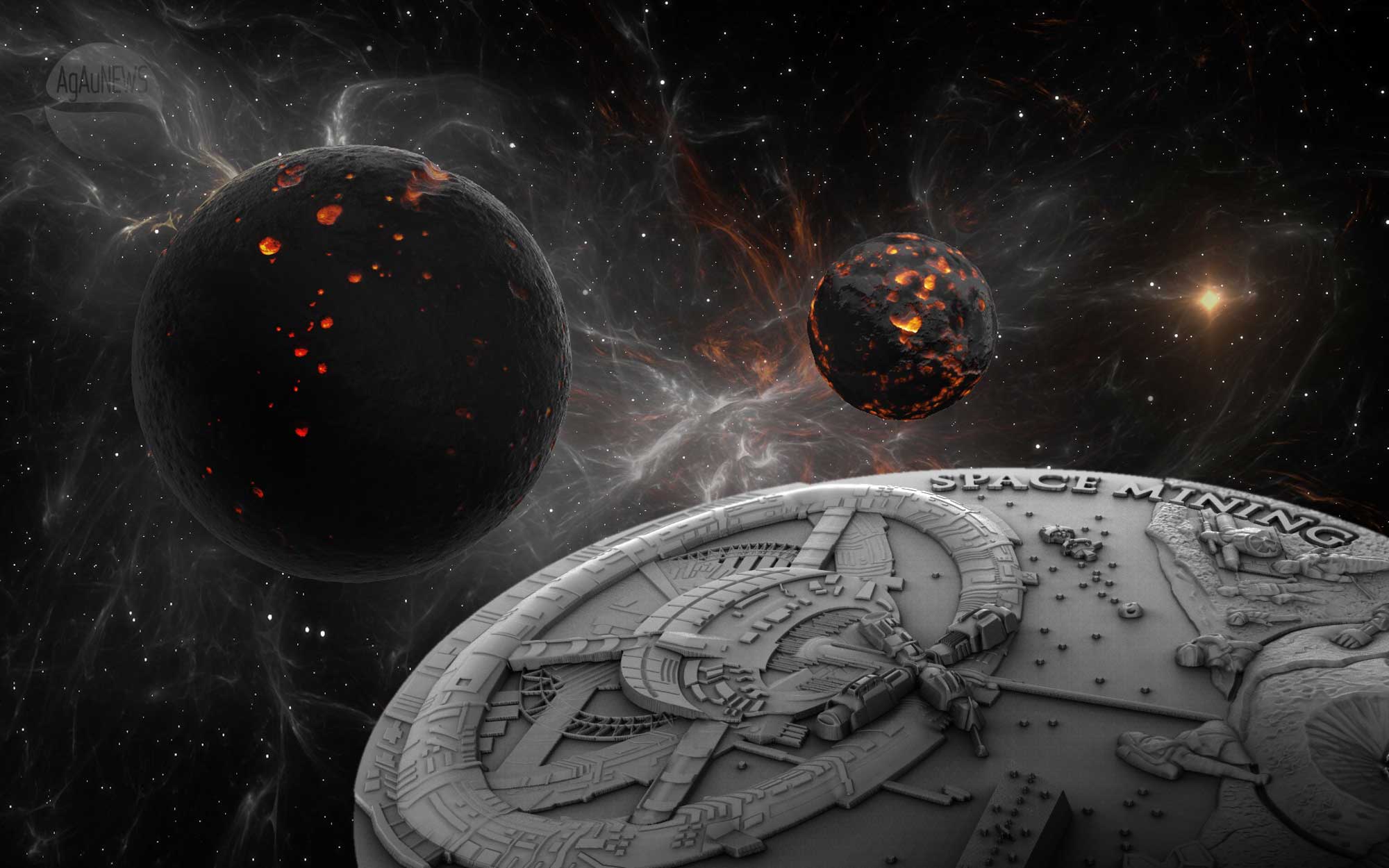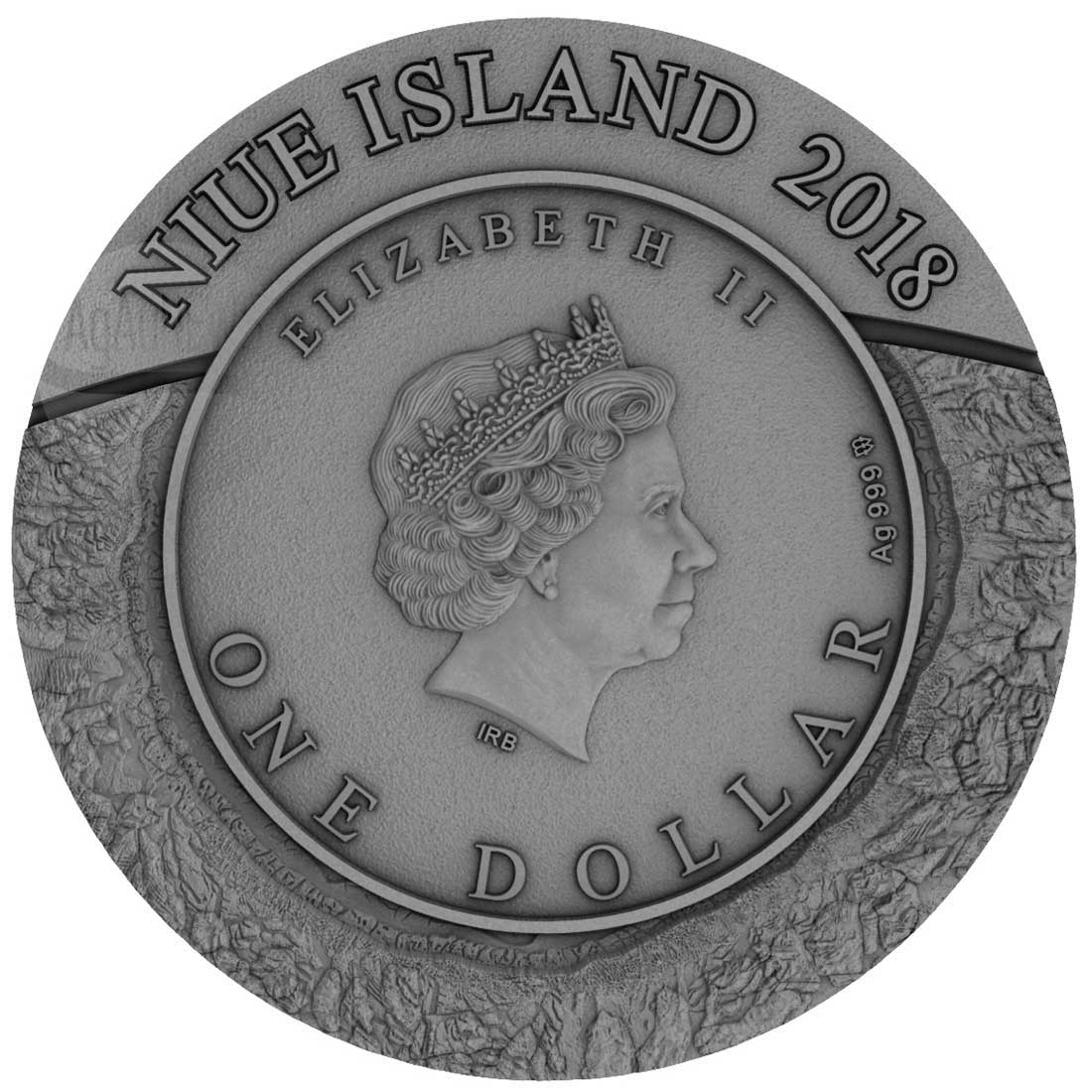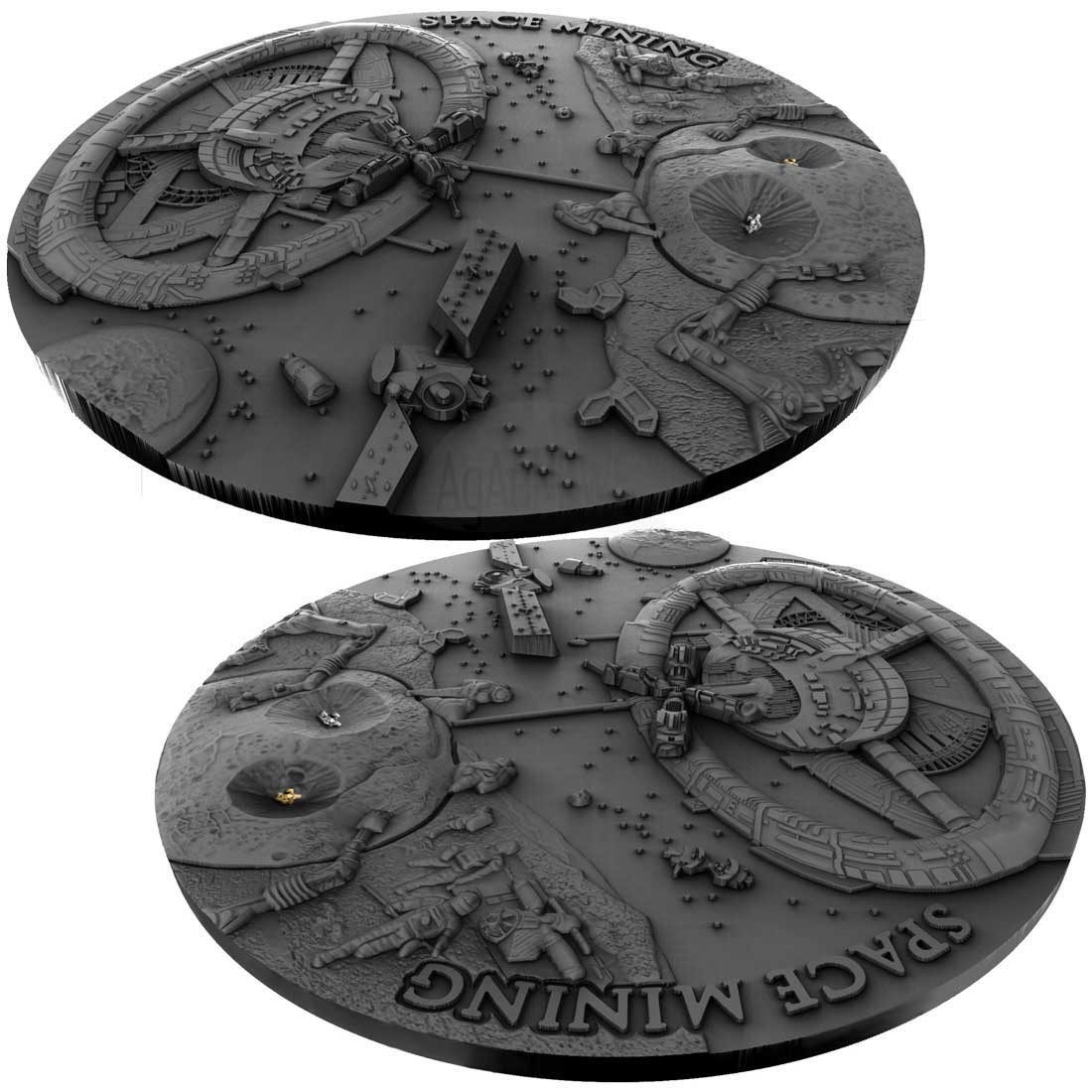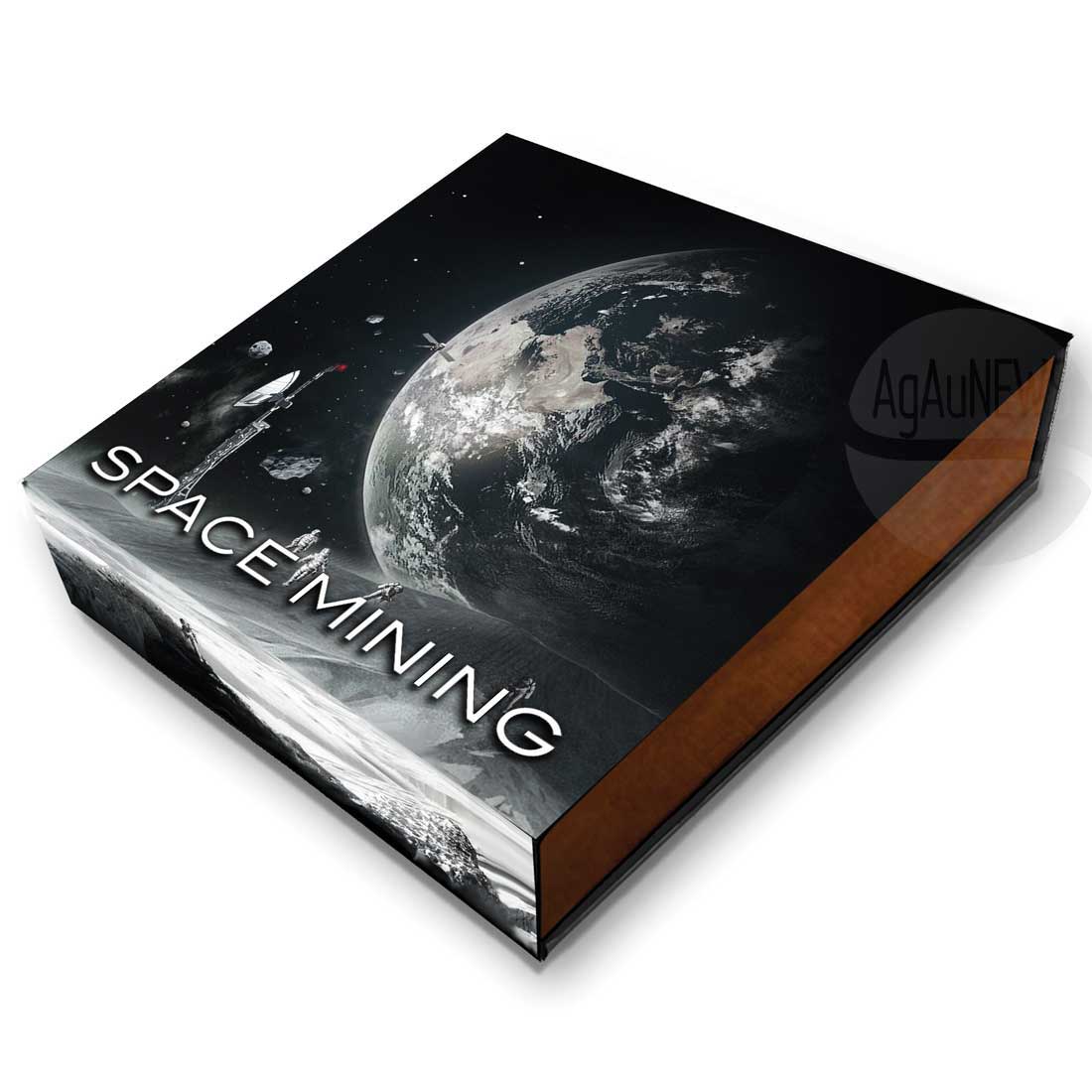Space mining is the unusual subject of the Mint of Poland’s latest silver meteorite coin
One of the most popular genres in modern commemorative coins, meteorites and astronomy always seems to find a healthy audience. Silver coins with actual embedded meteorite fragments have been available for over a decade, with Coin Invest Trust having a long-running presence in the market, and the Mint of Poland closely following with a wide range of its own. The latest effort here is from the Mint of Poland and bears all the usual hallmarks of design they’re known for.
Most meteorite coins are themed around the impact event being depicted. This one is different, choosing to showcase the emerging industry of space mining. It’s an inspired choice, offering a whole new perspective on the genre. The reverse face is absolutely packed full of detail – the scene featuring a space station, satellites, miners and much more. At the bottom is an embedded chondrite meteorite fragment.
The obverse has some subtle rock pattern around most of the border and in the centre the effigy of Queen Elizabeth II – no surprise for a Niue Island issue. Space Mining maintains the increasing trend at the Mint of Poland of theming this usually staid face of the coin. Both sides have an antique finish and the coin is rimless, which is something we like here.
This one is an ounce of fine silver in weight, so more affordable than the bigger stuff, but it won’t be bottom end as it’s a high-spec strike and even small meteorite fragments aren’t cheap. Packaging is a good quality wooden box and there will be an enclosed certificate of authenticity. The mintage is set at 666 pieces. We only have renders at the moment, but the Mint of Poland has a habit of making the real thing even better. We’ll run some images of the finished article when we get them. Distributed by Pela Coins, it’s available there or at several dealers worldwide, including some of our sponsors. It should ship around mid-June.
SPACE MINING
It’s no exaggeration to say that the mining of minerals and elements in space could well be mankinds saviour. It’s widely believed that many of the most important substances to our civilisation like phosphorus, antimony, zinc, tin, lead, indium, silver, gold and copper, will all be close to exhaustion in the next century. Fortunately, there are almost countless asteroids and spent comets in our solar system, many travelling quite close to Earth and they are absolutely laden with everything an industrialised society could need.
There are numerous difficulties to overcome, however. Identifying suitable subjects for mining is the first major problem and even without taking into account the technical difficulties, the costs are prohibitive. The rewards are great. Because of the Earths strong gravity, most heavy elements were pulled into the mantle as it formed around 4 billion years ago. Asteroids are extraordinarily rich in these minerals in comparison, as the gravity simply wasn’t there, and a lot of minerals in the Earths crust today are there as the result of asteroid impact.
Much is being done to examine the future possibility of mining in space and human inventiveness will likely make it happen. In an example of how ridiculous mankind has become with its infatuation with money and finance, it will probably be left until times are desperate before the undertaking is initiated. The bean counters must be obeyed…
| SPECIFICATION | |
| DENOMINATION | $1 New Zealand |
| COMPOSITION | 0.999 silver |
| WEIGHT | 31.1 grams |
| DIAMETER | 38.61 mm |
| FINISH | Antique |
| MODIFICATIONS | High-relief, inset meteorite fragment |
| MINTAGE | 666 |
| BOX / COA | Yes / Yes |







Leave A Comment